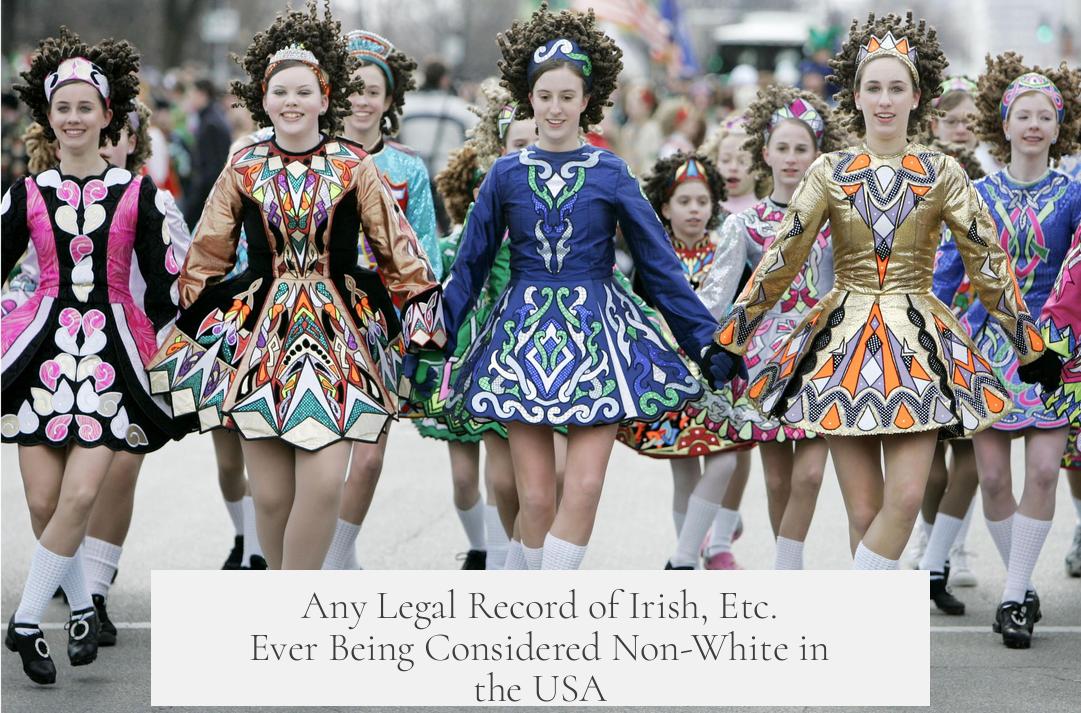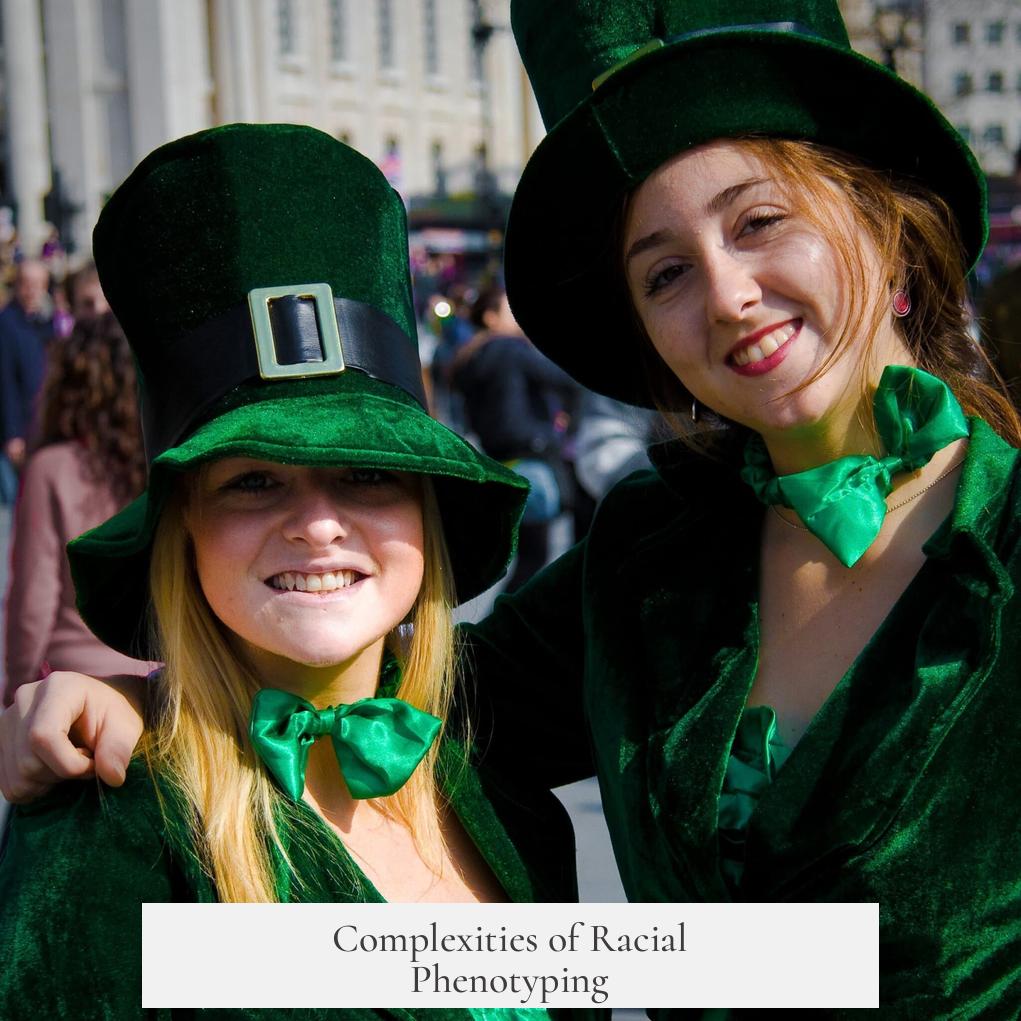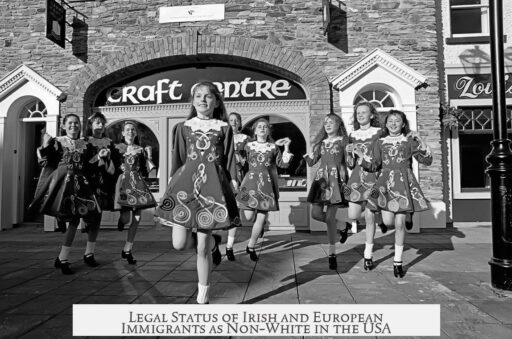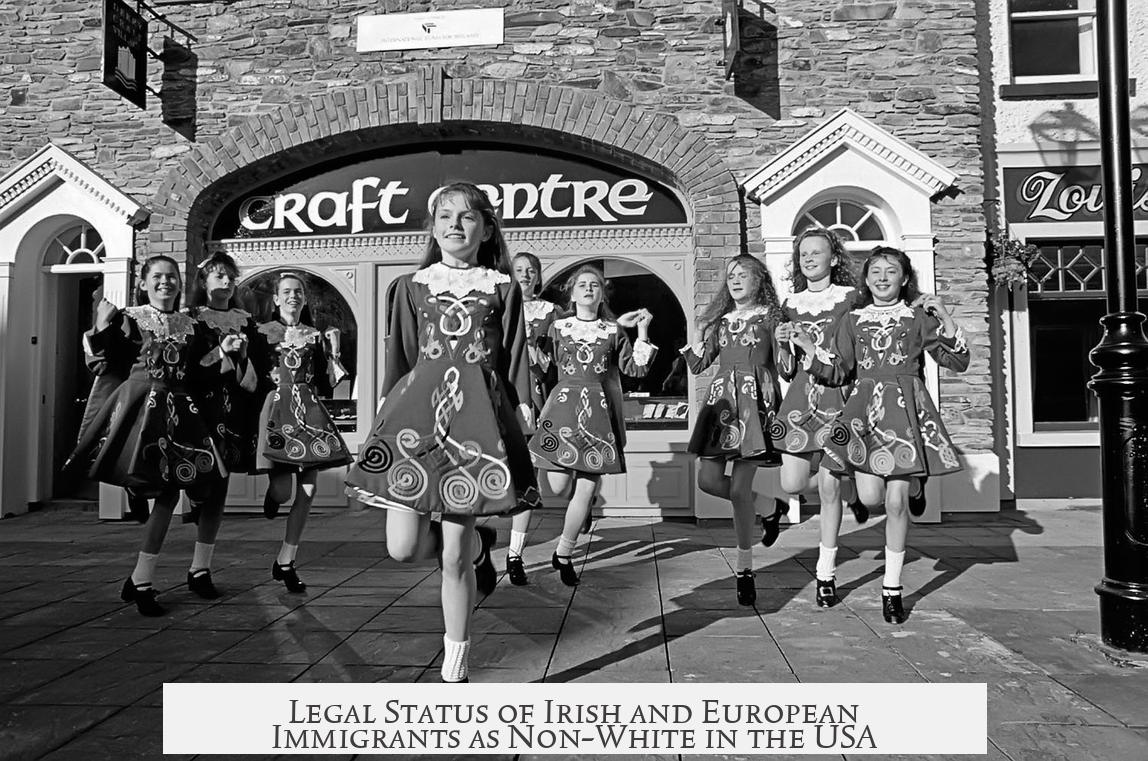There is no legal record or official classification in U.S. history that has ever designated Irish or similar European immigrant groups as non-white. While these groups, including Italians and Irish, faced social and institutional discrimination, they remained legally categorized as white. The concept of whiteness in the United States operates as a protective legal and social construct. Those identified as white receive certain rights and privileges enshrined in law, which Irish immigrants retained, despite varying degrees of acceptance.
The history of Irish and Italian immigrants illustrates complex social dynamics rather than formal legal racial reclassification. An effective way to understand this is through the analogy of an “umbrella of whiteness.” Europeans colonizing North America metaphorically carried this umbrella, which granted rights such as land ownership, voting, and community participation to those beneath it.
Irish and Italian immigrants sometimes stood near the edge of this umbrella, with limited access to some protections. For example, Irish immigrants often encountered exclusion in housing or schooling, and Italians faced similar barriers. However, legal authorities and courts never officially moved them outside the umbrella. They were not placed into an official category of “non-white” that would strip them of racial privileges recognized at law.
Racial phenotyping, which classifies individuals by physical traits such as skin color, is not a strict binary. The U.S. societal perception of race has layers and ambiguities. However, the legal system maintained a clear distinction, with whiteness as a legally acknowledged racial identity. As such, Irish immigrants were legally white even when socially marginalized.
- No official laws or legal records record the Irish as non-white.
- Irish and similar European immigrants endured social discrimination but retained legal whiteness.
- The umbrella analogy clarifies that whiteness provided legal protections and rights not extended to non-white groups.
- Racial phenotyping is complex, but legally Irish immigrants remained within the white racial category.
- Discrimination against Irish immigrants did not translate into formal racial reclassification in the U.S. legal system.
Any Legal Record of Irish, Etc. Ever Being Considered Non-White in the USA?

So, were the Irish, Italians, or other European groups ever legally considered non-white in the United States? The short answer—no. Legally, the Irish were always classified as white, even if they faced harsh social discrimination and exclusion from some privileges in early America. The idea of whiteness in the U.S. is like a peculiar kind of club, and if you were inside, you had certain protections no matter what your social standing was.
Let’s peek behind the curtain of this “whiteness” club to understand why Irish immigrants, despite facing frequent prejudice, were never officially labeled non-white.
The Concept of Whiteness and Legal Status in the USA
Whiteness in the U.S. isn’t about skin tone alone. It’s a social and legal construct that comes with specific protections and privileges. If you’re white, you’re legally protected in many ways—right to own property, vote, access certain jobs, and more.
There’s never been a historical moment where an entire ethnic or national group considered white was moved en masse into the “non-white” category. That’s just not how the system has operated.
Think of whiteness as an umbrella—carry it, and you are sheltered by laws and social norms designed to defend your place in society. But some groups stand closer to the edge of this umbrella, sometimes wetting their shoulders but never pushed out entirely.
Irish and Other European Immigrants: At the Edge of the Umbrella
If you imagine those who colonized North America arriving with a massive umbrella marked “Whiteness,” the Irish and Italians often found themselves near the fraying edges. They faced blatant discrimination, but they were not kicked off the lawn.
The powers that be—the government channels, legal institutions, and social gatekeepers—sometimes hesitated to grant full acceptance to groups like the Irish. This hesitancy was less about race strictly and more about class, religion (mostly Catholicism versus Protestantism), and economic competition.
Sure, Irish immigrants were excluded from some schools, faced housing discrimination, and were targets of ethnic slurs. A modern observer might casually say they were “treated like non-whites,” but let’s not be sloppy here. Being socially marginalized or excluded is not the same as being legally stripped of your white status.
Why Did the Irish Stay White? The Role of Law and Identity
Legally, the Irish have always been considered white in the U.S. No laws labeled them otherwise. This status meant they had the right to own land and vote, which non-white populations often were denied.
This wasn’t some generous gift handed over freely; it was a legal designation with a sturdy foundation. One glance at citizenship laws, property laws, and voting rights through American history tells the tale clearly.
This legal “whiteness” gave the Irish and similar groups a foothold they could build upon, which, over time, morphed the social landscape dramatically in their favor. “Irishness” could be criticized, attacked, made fun of, but it couldn’t be fully erased from that umbrella.
Complexities of Racial Phenotyping

Race isn’t painted in broad strokes here. The idea that all people can be sorted neatly into “white” or “non-white” boxes is outdated and frankly incorrect. Racial phenotyping—classifying people based on skin tone, facial features, or other physical traits—is complicated, variable, and never a precise science, especially in a melting pot like America.
While the Irish might have looked different enough to provoke suspicion or mockery, their physical appearance did not place them outside the legal definition of whiteness.
Keep in mind the historical context: many European immigrant groups started at the margins of full acceptance but gradually “leveled up” to full whiteness, especially as they assimilated culturally and politically.
A Quick Recap: What’s the Bottom Line?
- There is no legal record or systemic classification in American history officially labeling the Irish or similar groups as non-white.
- Discrimination happened, sure, sometimes brutal and lasting. Yet, it was never codified by law in racial terms.
- Social prejudice and legal whiteness are separate things. The Irish could feel the social sting but still enjoy the legal protections of whiteness.
Why Does This Matter Today?
Understanding this distinction is crucial. It reminds us that race, especially whiteness, means different things socially, culturally, and legally. It sheds light on why some minority groups strive to be “seen as white,” knowing the legal and social shield whiteness provides.
It also reveals that the immigrant story in America isn’t black-and-white—it’s hues of gray with historical twists. While the Irish were not non-white by law, their tough social climb teaches us about resilience and the shifting nature of identity in the U.S.
Curious About Modern Echoes?
Ever wonder why people say Irish immigrants were once “not white enough”? This phrase often refers to social prejudice and painful discrimination, not legal status. The lesson? Words can bend history if we’re not careful.
So, what does *your* place under the umbrella look like? Are some edges wetter than others? History shows some groups get blustery winds while staying dry. The umbrella of whiteness is broad but complex, and the Irish have always pitched their tent under its canvas—albeit sometimes near the drafty edges.




